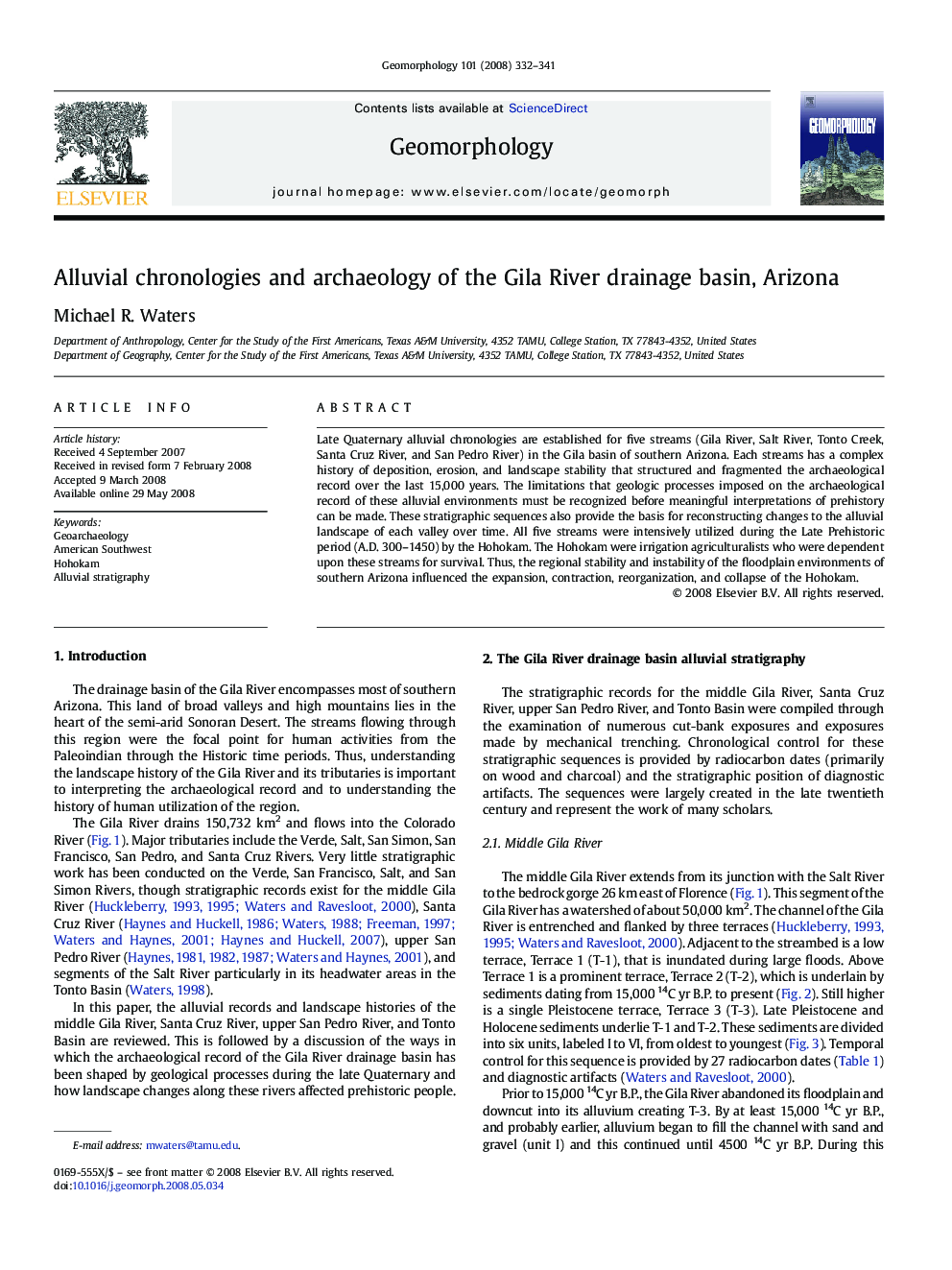| Article ID | Journal | Published Year | Pages | File Type |
|---|---|---|---|---|
| 4687009 | Geomorphology | 2008 | 10 Pages |
Late Quaternary alluvial chronologies are established for five streams (Gila River, Salt River, Tonto Creek, Santa Cruz River, and San Pedro River) in the Gila basin of southern Arizona. Each streams has a complex history of deposition, erosion, and landscape stability that structured and fragmented the archaeological record over the last 15,000 years. The limitations that geologic processes imposed on the archaeological record of these alluvial environments must be recognized before meaningful interpretations of prehistory can be made. These stratigraphic sequences also provide the basis for reconstructing changes to the alluvial landscape of each valley over time. All five streams were intensively utilized during the Late Prehistoric period (A.D. 300–1450) by the Hohokam. The Hohokam were irrigation agriculturalists who were dependent upon these streams for survival. Thus, the regional stability and instability of the floodplain environments of southern Arizona influenced the expansion, contraction, reorganization, and collapse of the Hohokam.
